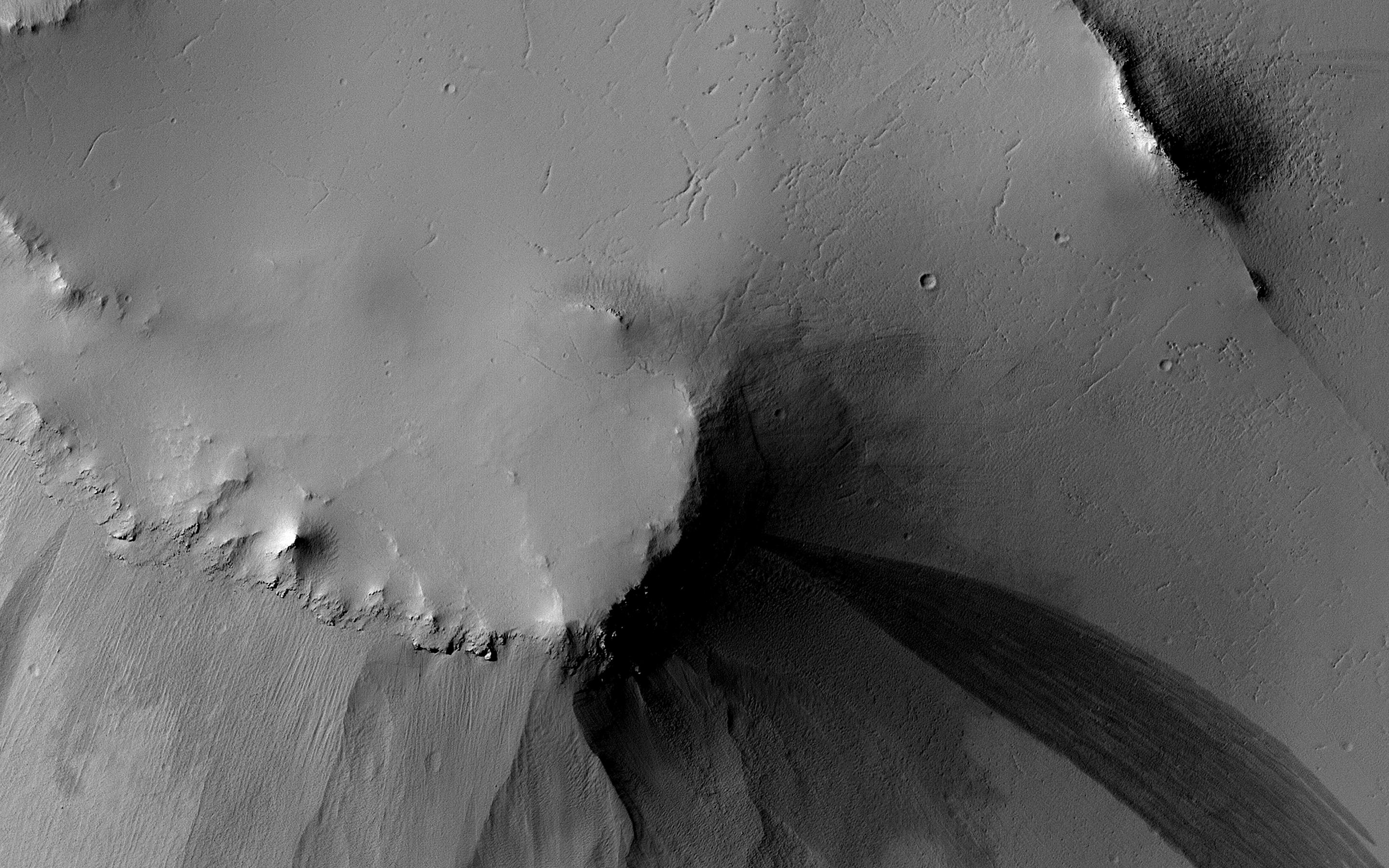
|
Both Ancient and Modern
- Click the image above for a larger view
- Full-Res JPEG (2880 x 1800) (860.4 kB)
- Full-Res TIFF (2880 x 1800) (5.2 MB)
Caption:

Map Projected Browse Image
Click on image for larger version
This image of the floor of an old impact crater in Arabia Terra shows evidence of multiple different geological processes, both ancient and modern.
The linear ridges and scarps formed eons ago, perhaps as fractures filled with lava or some other dark material that is more resistant to erosion than the surrounding materials in the crater floor. Boulders up to 3 meters in diameter are strewn downslope on both sides of the dark ridge near the center of the picture .
The nearby knob is the source of several long dark slope streaks. These dark streaks are probably caused by dust avalanches that remove bright dust and reveal the darker subsurface below. These streaks likely formed within the last few years, based on HiRISE observations of slope streaks elsewhere on Mars.
The map is projected here at a scale of 50 centimeters (19.7 inches) per pixel. (The original image scale is 56.8 centimeters [22.4 inches] per pixel [with 2 x 2 binning]; objects on the order of 170 centimeters [66.9 inches] across are resolved.) North is up.
Background Info:
The University of Arizona, in Tucson, operates HiRISE, which was built by Ball Aerospace & Technologies Corp., in Boulder, Colorado. NASA's Jet Propulsion Laboratory, a division of Caltech in Pasadena, California, manages the Mars Reconnaissance Orbiter Project for NASA's Science Mission Directorate, Washington.
Cataloging Keywords:
| Name | Value | Additional Values |
|---|---|---|
| Target | Mars | |
| System | ||
| Target Type | Planet | |
| Mission | Mars Reconnaissance Orbiter (MRO) | |
| Instrument Host | Mars Reconnaissance Orbiter | |
| Host Type | Orbiter | |
| Instrument | High Resolution Imaging Science Experiment (HiRISE) | |
| Detector | ||
| Extra Keywords | Color, Crater, Dust, Impact, Map | |
| Acquisition Date | ||
| Release Date | 2019-11-27 | |
| Date in Caption | ||
| Image Credit | NASA/JPL-Caltech/University of Arizona | |
| Source | photojournal.jpl.nasa.gov/catalog/PIA23584 | |
| Identifier | PIA23584 | |
